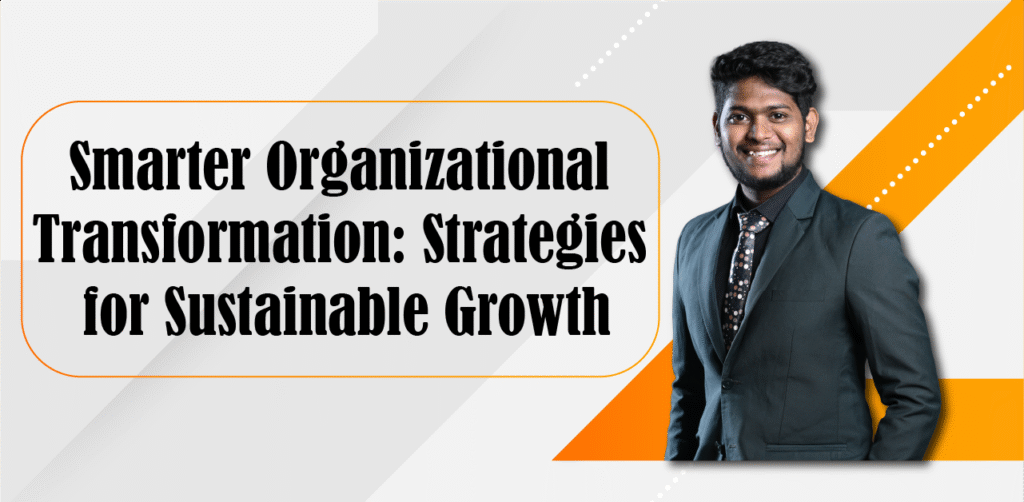In the modern dynamic business environment, it is important that organizations do not only change what they do, but also the way they do it. The data is now the key to success- it allows the leaders to go beyond their intuition and make decisions based on facts that would bring people, processes, and performance together towards a sustainable result.
Data-driven change management takes analytics to all levels of transformation such as planning and stakeholder involvement to adoption, measurement and continuous improvement. It is possible to improve the transparency, keep an eye on the readiness, and adapt in real time by using workforce insights and people data. This article explores how to integrate data-driven strategies into workforce transformation through six practical steps for smarter, more effective organizational change.
KEY TAKEAWAYS
Many transformation efforts focus heavily on tools and systems but overlook the workforce the people who must adapt and adopt. The success or failure of change initiatives often hinges on how employees engage, learn, and collaborate during the transition.
By leveraging people analytics such as engagement trends, collaboration patterns, and sentiment data organizations can identify friction points early, tailor interventions, and measure progress objectively. When workforce data becomes part of change management, the transformation shifts from being purely operational to deeply organizational.
Leadership can then use insights to monitor adoption, detect resistance, fine-tune communication, and strengthen behavioural alignment with strategic goals.

Every data-driven initiative begins with clarity. Establishing a measurable baseline allows you to define where you are and where you need to be.
For workforce transformation, start with metrics that reflect engagement, adoption, and capability growth. Examples include:
By creating this baseline, you give leadership and employees a transparent view of progress, improving trust and accountability across the organization.
Stakeholder engagement is a cornerstone of effective change management. When data is layered on top, it becomes a powerful decision-making tool.
Analytics can help identify:
These insights allow you to tailor communication, select the right champions, and anticipate resistance before it becomes a barrier.
With a clear understanding of your workforce data, design targeted interventions training, coaching, communication, or process redesigns that address actual needs rather than assumptions.
For example:
Predictive insights help ensure change strategies are relevant, personalized, and actionable.
Data-driven change management provides ongoing visibility into progress. Instead of waiting for quarterly reviews, leaders can monitor real-time data on:
Dashboards and visual reports make it easy for decision makers to pivot strategies quickly and maintain momentum across teams.
Transformation has real value only when outcomes tie back to business goals. Evaluate whether the behavioral and process shifts you’ve initiated are improving performance.
Key indicators might include:
This step reinforces the credibility of your change program showing stakeholders that transformation delivers measurable business results.
Change management doesn’t end with implementation. Sustainable success depends on creating a continuous feedback loop supported by data.
Organizations can sustain transformation by:
A culture that values data and learning makes change visible, measurable, and empowering helping employees become active participants in transformation rather than passive observers.

Consider a mid-size organization undergoing a workforce transformation to adopt new digital collaboration tools. By applying these six steps, the company could:
This iterative, data-centered approach ensures transformation is not a one time event but a continual process of learning and improvement.
While the benefits of data-driven change management are clear, organizations often face obstacles such as:
| Challenge | How to Overcome It |
|---|---|
| Data Quality and Availability | Begin with existing, reliable data sources and progressively build toward a unified system. Focus on accuracy, consistency, and relevance rather than sheer volume. |
| Resistance to Analytics | Communicate clearly about how workforce data is used highlighting its role in employee growth, engagement, and organizational improvement, not surveillance. |
| Lack of Data Literacy | Equip leaders and managers with intuitive dashboards, practical training, and continuous analytics education to improve confidence in data interpretation. |
| Siloed Systems or Culture | Integrate data platforms across departments and encourage collaboration through shared metrics and cross-functional initiatives. |
| Overemphasis on Tools Over People | Balance technology with empathy and communication. Use data to enhance human centered strategies that inspire trust, inclusion, and participation. |
Transformation isn’t about implementing new systems it’s about helping people adapt, collaborate, and grow.
By grounding workforce transformation in data-driven principles defining baselines, engaging stakeholders, tailoring interventions, monitoring adoption, linking outcomes, and fostering continuous improvement organizations build resilience and agility for the future.
At TekWissen, we believe successful transformation starts with people and scales with data. Our approach integrates workforce analytics, change enablement, and strategic alignment helping clients turn insights into action and change into lasting impact.
Empower your organization with data-driven change management and transform smarter, not harder.
Elevate your hiring process with Skill-Based Hiring, reducing bias, optimizing workforce planning, and empowering organizations for future-ready
success.
Explore how GCCs evolved from outsourcing to drive innovation. Discover the key differences between in-house global capability centers and traditional models.
Upskilling and reskilling strategies for global capability centers (GCCs). Optimize talent, drive innovation, and build a future-ready workforce in GCCs.